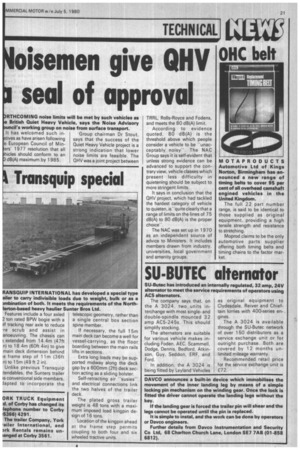oisemen give QHV seal of approval
Page 23

If you've noticed an error in this article please click here to report it so we can fix it.
RTHCOM I NG noise limits will be met by such vehicles as British Quiet Heavy Vehicle, says the Noise Advisory uncil's working group on noise from surface transport.
It has welcomed such inGroup chairman Dr Stout, tives as have arisen following says that the success of the e European Council of MinQuiet Heavy Vehicle project is a ers' 1977 resolution that all strong indication that lower hides should conform to an noise limits are feasible. The dB(A) maximum by 1985. QHV was a joint project between TRRL, Rolls-Royce and Fodens, and meets the 80 dB(A) limit.
According to evidence quoted, 80 dB(A) is the threshold above which people consider a vehicle to be "unacceptably noisy". The NAC Group says it is self-evident that unless strong evidence can be advanced to support the contrary view, vehicle classes which present less difficulty in quietening should be subject to more stringent limits.
It says in conclusion that the QHV project, which had tackled the hardest category of vehicle to quieten, is ' 'quite clearly that a range of limits on the lines of 75 dB(A) to 80 dB(A) is the proper The NAC was set up in 1970 as an independent source of advice to Ministers. It includes members drawn from industry, universities, local government and amenity groups.












































































































































































































